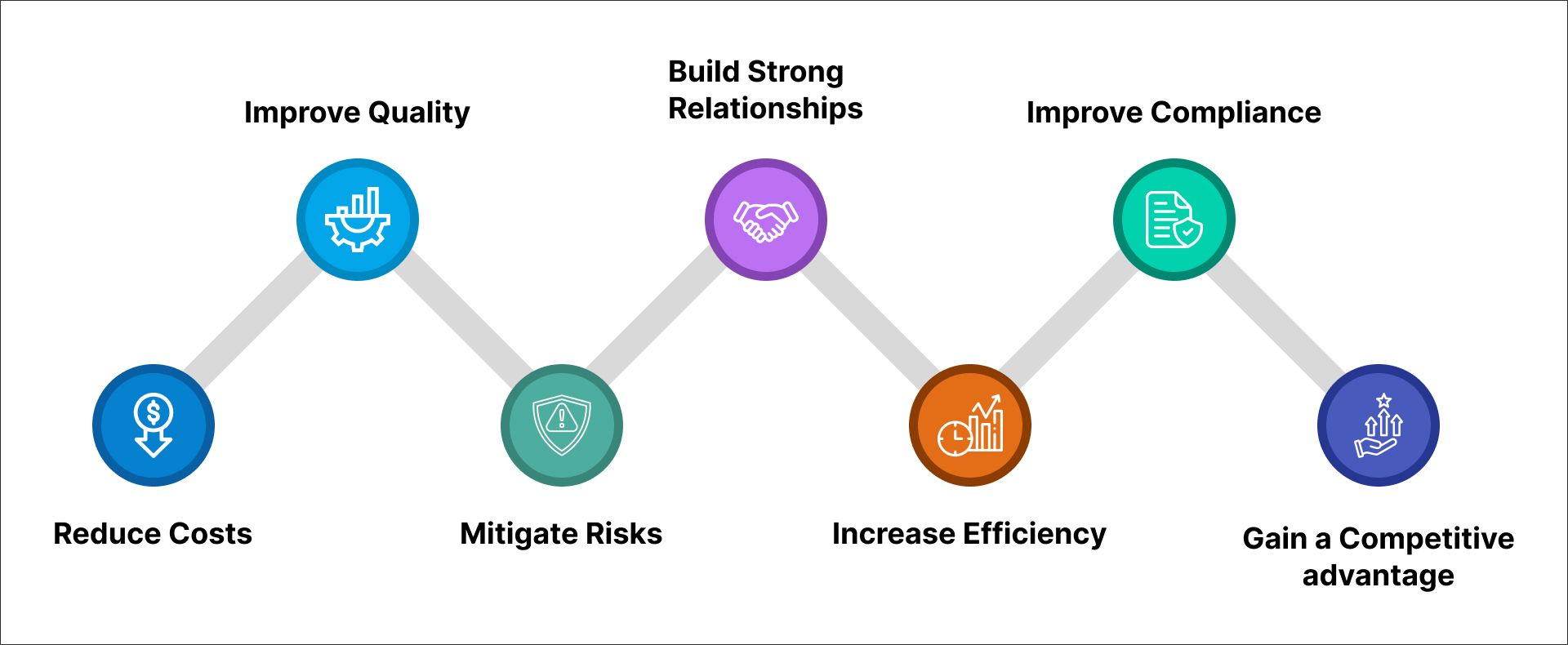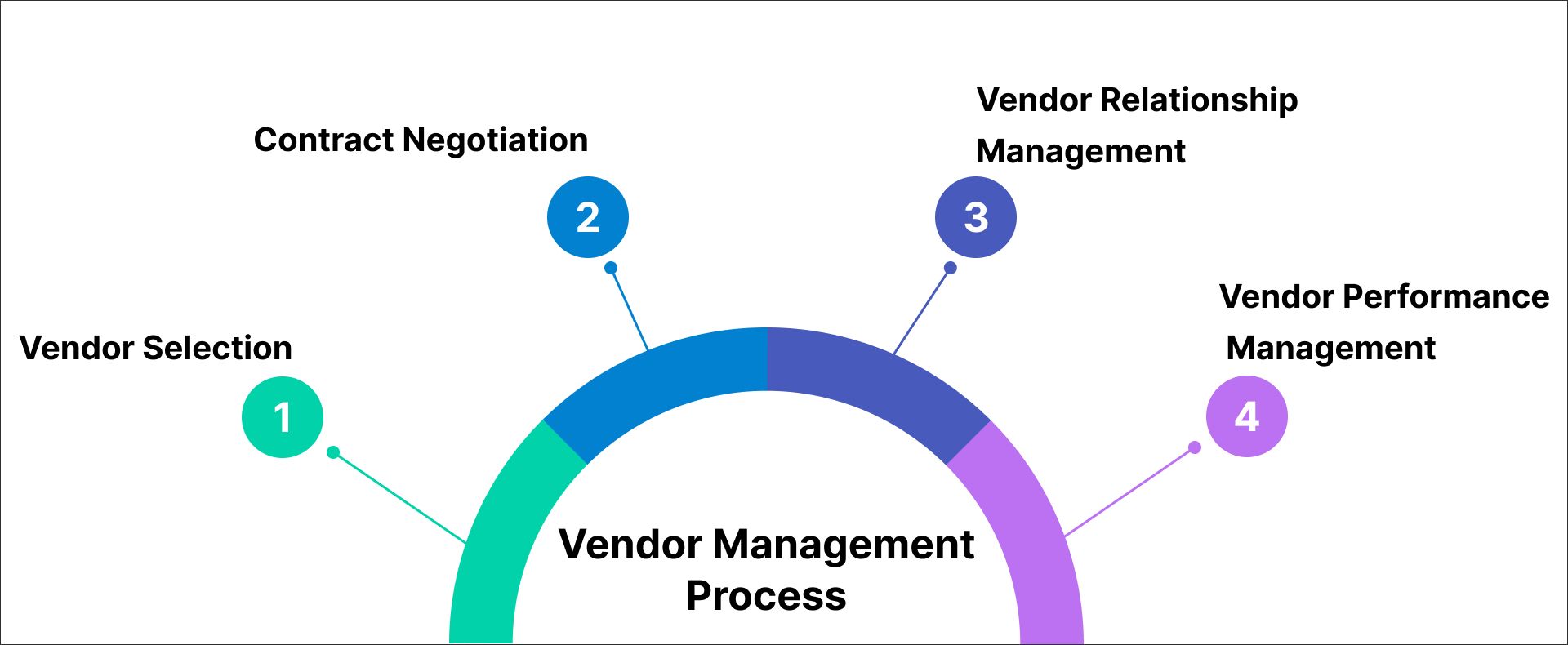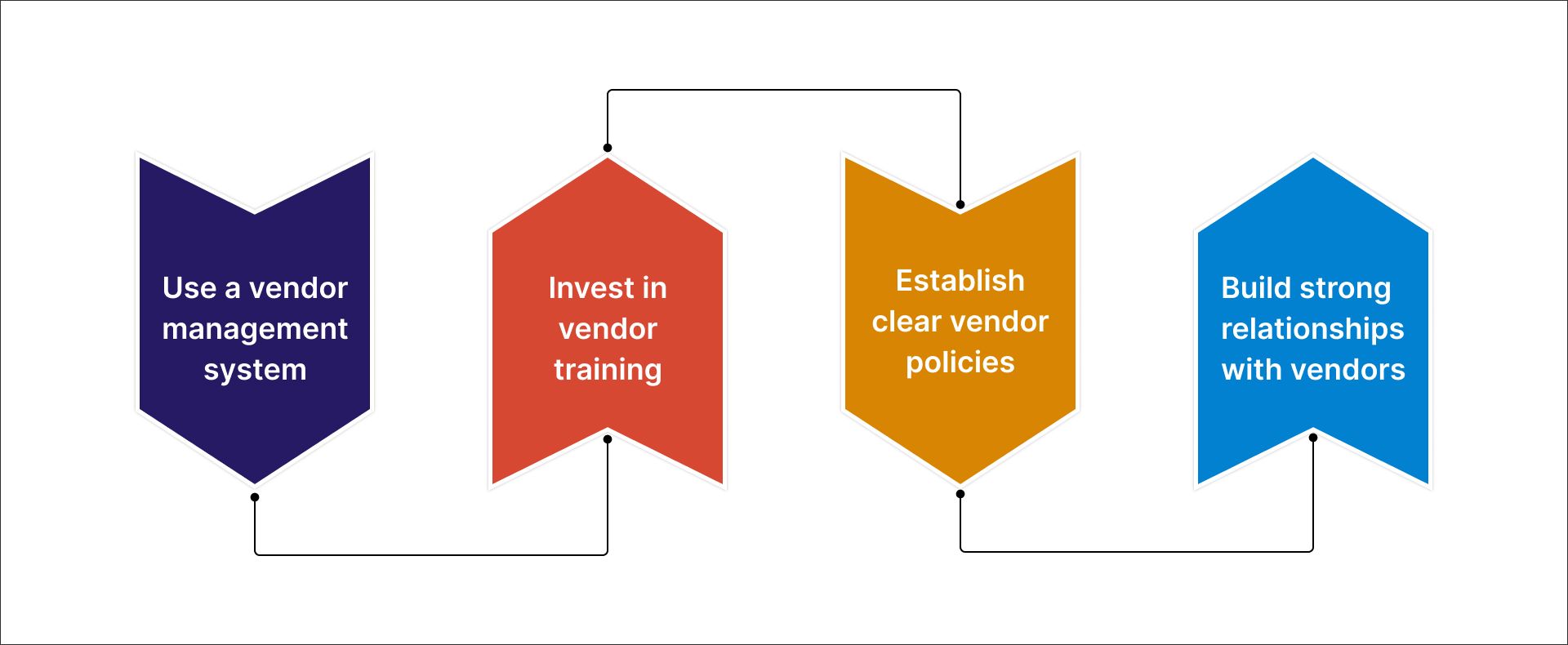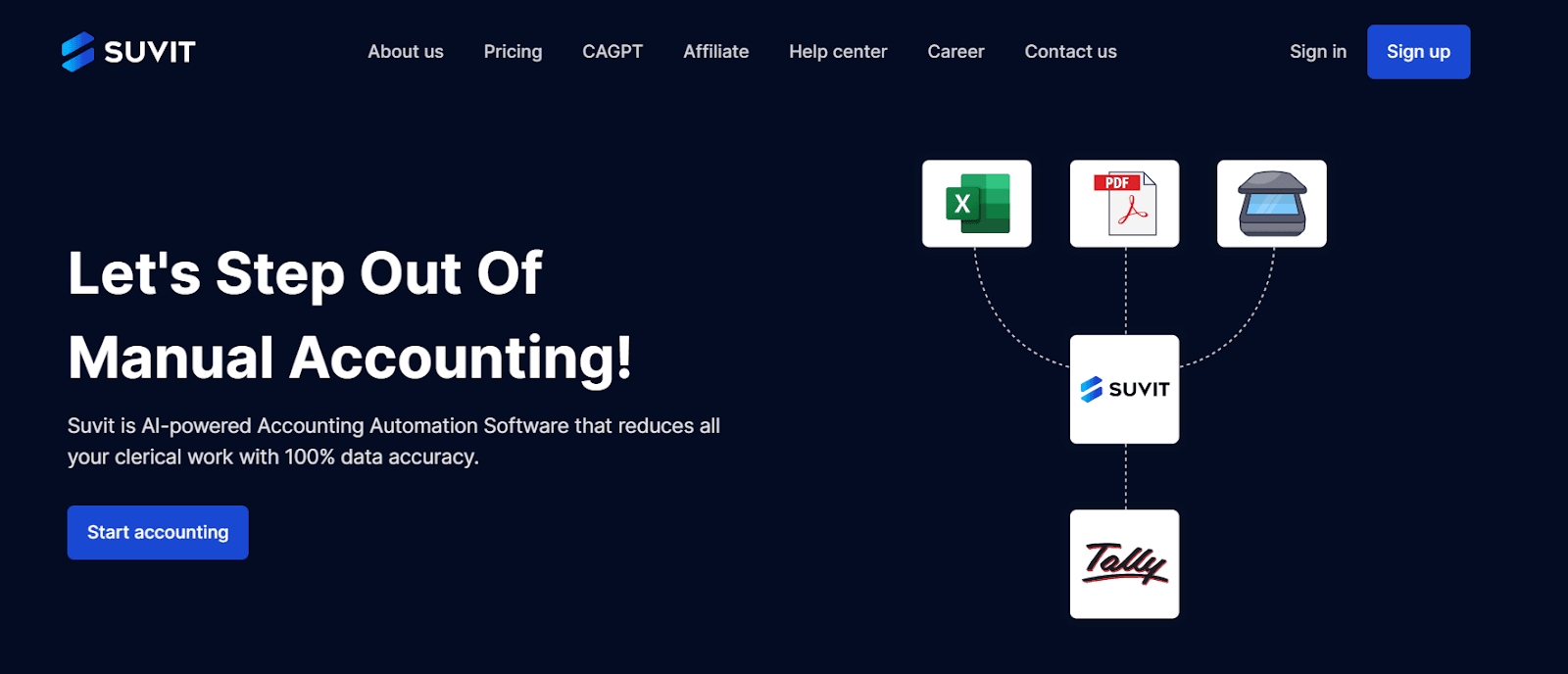Vendor management is the process of overseeing and managing the relationships between a company and its suppliers. It encompasses all aspects of the vendor relationship, from vendor selection and contract negotiation to performance management and relationship building.
Effective vendor management is essential for businesses of all sizes. It can help to reduce costs, improve quality, and mitigate risks.
In this blog post, we will discuss the definition, process, challenges, and solutions of vendor management. We will also provide some tips for implementing effective vendor management practices in your own business.
Let’s begin with understanding the meaning of vendor management.
What is vendor management?
Vendor management is the process of overseeing and managing the relationships between a company and its suppliers. It encompasses all aspects of the vendor relationship, from vendor selection and contract negotiation to performance management and relationship building.
Vendor management is important because vendors play a critical role in the success of many businesses. Vendors provide the goods and services that businesses need to operate, and they can have a significant impact on costs, quality, and risk.
Also Read: Work Smarter, Not Harder: Invoice Automation with Vyapar TaxOne
Why is vendor management important?

Vendor management is important for a number of reasons, including:
- Reduce costs: Vendor management can help businesses reduce costs by negotiating better prices, ensuring that vendors are delivering on their commitments, and avoiding waste.
- Improve quality: Vendor management can help businesses improve quality by setting clear expectations, monitoring vendor performance, and providing feedback.
- Mitigate risks: Vendor management can help businesses mitigate risks by carefully selecting vendors, managing contracts effectively, and monitoring vendor performance.
- Build strong relationships: Vendor management can help businesses build strong relationships with their vendors, which can lead to improved communication, collaboration, and innovation.
- Increase efficiency: By streamlining the vendor management process, businesses can free up resources to focus on other priorities.
- Improve compliance: Vendor management can help businesses ensure that they are complying with all applicable laws and regulations.
- Gain a competitive advantage: By effectively managing their vendors, businesses can gain a competitive advantage by lowering costs, improving quality, and mitigating risks.
In addition to these general benefits, effective vendor management can also provide specific benefits to businesses in different industries. For example, effective vendor management can help businesses in the manufacturing industry improve product quality and reduce lead times.
Effective vendor management can help businesses in the healthcare industry to improve patient safety and reduce costs. And effective vendor management can help businesses in the retail industry to improve customer satisfaction and increase sales.
Here are some specific examples of how businesses have benefited from vendor management:
- A manufacturing company was able to reduce its costs by 10% by negotiating better prices with its vendors.
- A healthcare company was able to improve patient safety by requiring its vendors to implement certain quality control measures.
- A retail company was able to increase customer satisfaction by improving the quality of the products it sells from its vendors.
Vendor Management Process

1. Vendor selection
Vendor selection is the process of identifying and evaluating potential vendors. This includes understanding the company's needs, researching the vendor market, and assessing potential vendors based on a set of criteria.
Here are some factors that businesses should consider when selecting vendors:
- Reputation: What is the vendor's reputation in the industry? Do they have a good track record of delivering quality goods or services?
- Experience: Does the vendor have the experience and expertise to meet the company's needs?
- Capabilities: Does the vendor have the resources and capabilities to deliver on their commitments?
- Pricing: Is the vendor's pricing competitive?
- Quality: Does the vendor provide high-quality goods or services?
- Compliance: Is the vendor compliant with all applicable laws and regulations?
2. Contract negotiation
Once a vendor has been selected, the next step is to negotiate a contract. The contract should clearly define the terms of the relationship, including the goods or services to be provided, the price, the payment terms, and the dispute resolution process.
Here are some tips for negotiating contracts with vendors:
- Be clear about your needs and expectations.
- Do your research and understand the vendor's market position.
- Be prepared to walk away from the negotiation if you can't reach an agreement that is fair and beneficial to both parties.
- Use a lawyer to review the contract before you sign it.
3. Vendor performance management
Vendor performance management is the process of monitoring and evaluating vendor performance. This includes tracking key performance indicators (KPIs), such as delivery times, quality, and cost.
Businesses should regularly review vendor performance and provide feedback to vendors on how they can improve. If a vendor is not meeting expectations, the business may need to take corrective action, such as issuing a warning or terminating the contract.
4. Vendor relationship management
Vendor relationship management is the process of nurturing and maintaining strong relationships with vendors. This includes building trust, communicating effectively, and collaborating on solutions.
Businesses should invest in building strong relationships with their vendors. This can lead to improved communication, collaboration, and innovation. Strong vendor relationships can also help businesses mitigate risks and reduce costs.
Here are some tips for building strong vendor relationships:
- Be transparent and honest with your vendors.
- Communicate regularly and effectively.
- Be responsive to vendor concerns.
- Be willing to collaborate on solutions.
- Recognize and reward vendor performance.
By carefully managing the vendor management process, businesses can improve their bottom line, increase their efficiency, and gain a competitive advantage.
Challenges of Vendor Management
1. Lack of resources
One of the biggest challenges of vendor management is the lack of dedicated resources. Many businesses simply don't have the staff or budget to dedicate to effectively managing their vendors. This can lead to a number of problems, such as:
- Vendor selection: Businesses may not have the time or resources to carefully select vendors, which can lead to choosing vendors who are not a good fit for their needs.
- Contract negotiation: Businesses may not have the expertise or experience to negotiate contracts with vendors effectively.
- Vendor performance management: Businesses may not have the resources to track and measure vendor performance on a regular basis.
- Vendor relationship management: Businesses may not have the time or resources to build and maintain strong relationships with vendors.
2. Complexity
Another challenge of vendor management is the complexity of managing a large number of vendors with different needs and requirements. Businesses need to be able to track and manage contracts, invoices, performance metrics, and other information for each vendor. This can be a daunting task, especially for businesses with a large number of vendors.
3. Risk
Vendors can pose a number of risks to businesses, such as financial risk, operational risk, and reputational risk.
- Financial risk: Vendors can default on their contracts, which can lead to financial losses for businesses.
- Operational risk: Vendors can provide goods or services that are not up to standard, which can lead to operational disruptions for businesses.
- Reputational risk: Vendors can engage in unethical or illegal practices, which can damage the reputation of the business.
Ways to Solve Vendor Management Challenges

1. Use a vendor management system (VMS)
A vendor management system (VMS) is a software solution that can help businesses automate and streamline many of the vendor management processes. This can free up businesses to focus on other priorities and improve their vendor management efficiency.
VMSs can help businesses with a variety of tasks, including:
- Vendor selection and onboarding
- Contract management
- Vendor performance management
- Vendor risk management
- Vendor relationship management
VMSs can also provide businesses with insights into their vendor spend and performance. This information can be used to make better decisions about which vendors to work with and how to improve vendor performance.
Also Read: Voucher 101: Conquer Those Papers Without the Tears
2. Invest in vendor training
Training employees on vendor management best practices can help businesses improve their vendor relationships and performance. Employees should be trained on how to select vendors, negotiate contracts, manage vendor relationships, and monitor vendor performance.
Vendor management training can help employees understand the importance of vendor management and how it can impact the business. It can also help employees to develop the skills and knowledge they need to manage vendors effectively.
3. Establish clear vendor policies and procedures
Having clear vendor policies and procedures in place can help businesses to manage their vendors more effectively. This can help to ensure that all vendors are treated fairly and consistently.
Vendor policies and procedures should cover a variety of topics, including:
- Vendor selection criteria
- Contract terms and conditions
- Vendor performance expectations
- Vendor dispute resolution procedures
Vendor policies and procedures should be communicated to all employees who work with vendors. This will help to ensure that everyone is on the same page and that vendors are managed consistently.
4. Build strong relationships with vendors
Investing in vendor relationships can help businesses build trust and cooperation, which can lead to improved performance. Vendors are more likely to go the extra mile for businesses that they have a good relationship with.
Businesses can build strong relationships with vendors by:
- Being transparent and honest with vendors
- Communicating regularly and effectively
- Being responsive to vendor concerns
- Being willing to collaborate on solutions
- Recognizing and rewarding vendor performance
Best practices for vendor management
Here are some best practices for vendor management:
- Have a clear vendor management strategy. This strategy should define the goals of vendor management, the roles and responsibilities of key stakeholders, and the processes that will be used to manage vendors.
- Select vendors carefully. When selecting vendors, businesses should consider a number of factors, including the vendor's experience, capabilities, pricing, and reputation.
- Negotiate fair and comprehensive contracts. Contracts should clearly define the goods or services to be provided, the price, the payment terms, and the dispute resolution process.
- Monitor vendor performance regularly. Businesses should track key performance indicators (KPIs) and provide feedback to vendors on how they can improve their performance.
- Manage vendor risk effectively. Businesses should assess the risks associated with vendors and take steps to mitigate those risks.
- Build strong vendor relationships. Strong vendor relationships can lead to improved communication, collaboration, and innovation.
Automation in vendor management
Automation can be a powerful tool for improving vendor management efficiency and effectiveness. By automating repetitive tasks, businesses can free up their employees to focus on more strategic work.
Here are some specific ways that automation can be used in vendor management:
- Vendor selection and onboarding: Automation can be used to streamline the vendor selection and onboarding process. This can include tasks such as gathering vendor information, creating contracts, and sending onboarding materials.
- Contract management: Automation can be used to manage contracts more effectively. This can include tasks such as tracking contract expiration dates, generating reminders, and notifying stakeholders of changes.
- Vendor performance management: Automation can be used to track vendor performance and identify areas for improvement. This can include tasks such as collecting data on key performance indicators (KPIs), generating reports, and sending alerts to stakeholders.
- Vendor risk management: Automation can be used to assess and manage vendor risk. This can include tasks such as identifying potential risks, assessing the likelihood and impact of those risks, and developing mitigation strategies.
- Vendor relationship management: Automation can be used to improve vendor relationships. This can include tasks such as sending regular communication, tracking interactions, and managing feedback.
Here are some specific benefits of automation in vendor management:
- Cost savings: Automation can help businesses save money on labour costs, as well as on other costs associated with vendor management, such as postage and printing.
- Time savings: Automation can help businesses save time on repetitive tasks, such as data entry and contract management. This frees up employees to focus on more strategic work.
- Increased efficiency: Automation can help businesses operate more efficiently by streamlining processes and eliminating bottlenecks.
- Reduced risk: Automation can help businesses to reduce risk by identifying and mitigating potential risks associated with vendors.
- Improved vendor relationships: Automation can help businesses improve vendor relationships by providing vendors with timely and accurate information, and by making it easier for vendors to do business with the business.
Vyapar TaxOne and automating vendor management
Vyapar TaxOne is an AI-powered accounting automation tool that streamlines the migration of data from Excel to Tally, effectively eliminating manual data entry tasks. Our tool simplifies the process and offers several benefits, saving time and enhancing accuracy.

Major Features:
- Automated Data Migration: Vyapar TaxOne handles the data transfer process from Excel and PDFs to Tally, eliminating the need for manual entry.
- Effortless Data Upload: Easily upload exported files from Excel to Tally using Vyapar TaxOne for seamless migration.
- Error-Free Entries: With AI-powered technology, Vyapar TaxOne ensures accurate and precise data migration, eliminating errors.
- Enhanced Productivity: Vyapar TaxOne's automation frees up time, allowing you to focus on more strategic tasks.
- Anywhere Access: After migration to Tally, your data becomes accessible from any location, enhancing flexibility.
Here are some specific examples of how Vyapar TaxOne can be used to automate vendor management:
- Automatically create vendor records in Tally: Vyapar TaxOne can be used to automatically create vendor records in Tally based on data from Excel or PDF files. This can save businesses a significant amount of time and effort.
- Automatically generate vendor invoices: Vyapar TaxOne can be used to automatically generate vendor invoices based on purchase orders or other data. This can help businesses to streamline their invoicing process and reduce the risk of errors.
- Automatically reconcile vendor payments: Vyapar TaxOne can be used to automatically reconcile vendor payments based on invoices and other data. This can help businesses to ensure that all payments are made on time and accurately.
- Automatically generate vendor reports: Vyapar TaxOne can be used to automatically generate vendor reports on key performance indicators (KPIs), such as spend, performance, and risk. This can help businesses to track their vendor relationships and make better decisions about which vendors to work with.
Overall, Vyapar TaxOne can be a valuable tool for automating vendor management tasks and improving efficiency and effectiveness.
Ready to Give it a Try?
Vyapar TaxOne is an AI-powered accounting automation tool that can be used to streamline the migration of data from Excel to Tally, effectively eliminating manual data entry tasks. This can free up time and enhance accuracy, which can be beneficial for vendor management.
You can take a free trial and try out Vyapar TaxOne for 7 days without the need to provide any credit card details. Simply sign up for your account, and you’re good to go!












